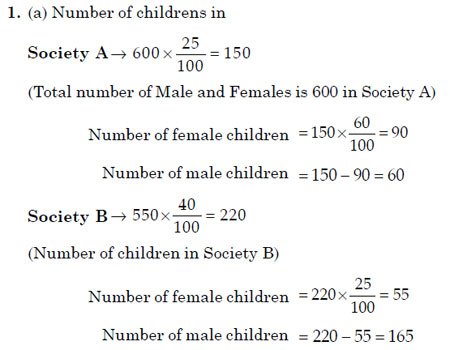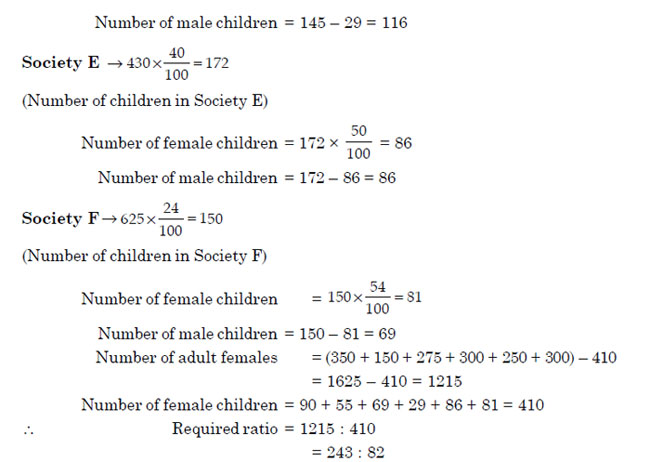Study Materials for IBPS, Bank Exams : Data Interpretation : Tabulation
Study Materials for IBPS, Bank Exams : Data Interpretation : Tabulation
Tables:
1. Make sure to look at the entire table or graph.
2. Make sure to express your answer in the correct units (Units of the Tables or
Graphs).
3. Look at the possible answers before calculating.
4. Don’t confuse decimals and percentages. If the units are percentages, then an
entry of .2 means .2% which is equal to .002.
5. In inference questions, only the information given can be used. See if the
answer makes sense.

Q. What is the difference in weight between the tallest and shortest infants?
(a) 13 pounds
(b) 12.1 pounds
(c) 8.8 pounds
(d) 6.9 pounds
The correct answer is (c), which is obtained by subtracting 3.3 (the weight of the shortest–10 inches–infant) from 12.1 (the weight of the tallest–23 inches–infant).
Example
Directions: Study the following table carefully and answer the questions given below.
1. What is the respective ratio of the number of adult females to the total number of female children staying in all the societies together?
(a) 243 : 82
(b) 112 : 71
(c) 82 : 243
(d) 71 : 112
2. What is the total number of female children staying in all the societies together?
(a) 314
(b) 433
(c) 410
(d) 343
3. What is the respective ratio of the total number of adult males in societies A and B together to the total number of adult males in societies E and F together?
(a) 75 : 79
(b) 14 : 17
(c) 79 : 75
(d) 17 : 14
4. What is the total number of members staying in all the societies together?
(a) 3520
(b) 3360
(c) 4100
(d) 3000
5. What is the difference between the number of male children in society B and the number of male children in society F?
(a) 84
(b) 14
(c) 96
(d) 26
Solutions:





